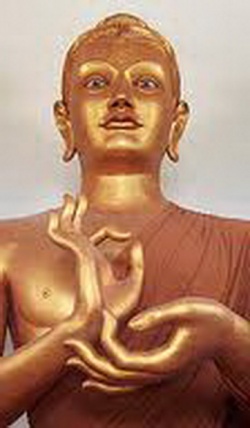Ichinen
ichinen
一念 (Jpn; Chin i-nien )
The ‘great spirit of inquiry’, the ‘perpetual knocking at a door’ (Suzuki) which is necessary before the break-through to Satori is attained.
The word ‘doubt’ is too negative, for the state of mind is also fiercely positive.
Not to be confused with the Chinese classic, I Ching (‘Book of Changes’).
A single moment of life, one instant of thought, or the mind or life at a single moment. Also, life-moment, thought-moment, or simply a single moment or instant.
Ichinen has various meanings in Buddhism:
(1) A moment, or an extremely short period comparable to the Sanskrit term kshana. The Treatise on the Great Perfection of Wisdom defines one kshana or moment as a sixtieth of the time it takes to snap one's fingers.
(2) The functioning of the mind for one moment. The "Distinctions in Benefits" (seventeenth) chapter of the Lotus Sutra speaks of a single moment of belief and understanding.
(3) To focus one's mind on meditating on a Buddha; Shan-tao (613-681), a patriarch of the Chinese Pure Land school, defined ichinen (one instant of thought) as chanting Amida Buddha's name once.
(4) T'ient'ai (538-597) philosophically interprets ichinen in his doctrine of three thousand realms in a single moment of life ( Jpn ichinen-sanze Chin i-nien san-ch'ien ). In this doctrine, ichinen indicates the mind of an ordinary person, which at each moment is endowed with the potential of three thousand realms; its characteristics are:
(a) it pervades the entire universe;
(b) it includes both body and mind;
(c) it includes both self and environment;
(d) it gives rise to good and evil; and
(e) it encom-passes cause and effect simultaneously.
Nichiren (1222-1282) embodied this philosophical framework in the form of a mandala known as the Gohonzon. By this he aimed to establish a practical way for ordinary people to manifest Buddhahood from among the Ten Worlds of their own lives.
